Have you ever wondered, how many types of eels are there?
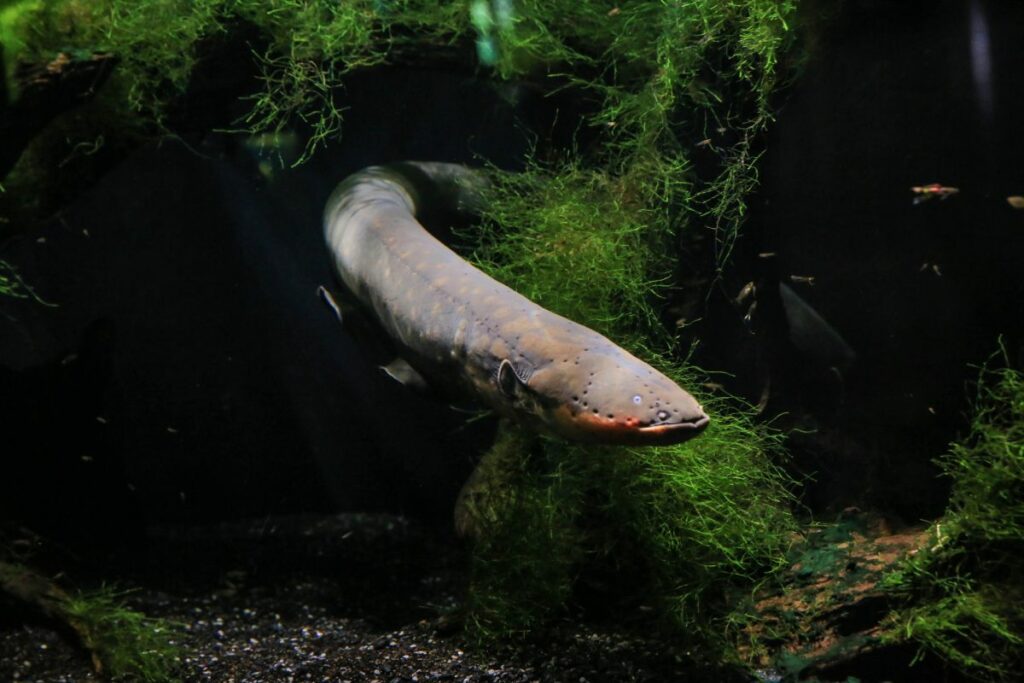
Eels terrify some people because they look like snakes. Other people find them fascinating, and keep them as pets.
Whatever your stance, it’s hard to deny that eels are interesting. There is a world of information about eels that researchers are yet to discover.
How Many Species Of Eels Are There?
There are 19 families containing over 800 different types of eels. Saltwater eel species are more abundant than freshwater eels.
What Is An Eel?
All ‘true’ eel species have a few characteristics in common. These characteristics set them apart from other eel-like fish. Wolf eels and electric eels, for instance, are not eels at all.
A ‘true’ eel is a fish that:
- Has a continuous dorsal fin that connects with the caudal and anal fins
- Small, embedded scales or no scales
- Freshwater eels spend part of their lives in freshwater and part in saltwater
- They produce slime
- They have many sharp teeth
- Juvenile eels are flat and look like a ribbon
Despite their strange appearance, eels are a type of fish. American Oceans says “True eels are basically an elongated, slimy fish belonging to the Anguilliformes order (meaning “snake-shaped.”).”
Are Eels Freshwater Or Saltwater?
There are both freshwater and saltwater eels.
A saltwater eel spends its entire life in the ocean.
Freshwater eels are catadromous. This means they spend most of their lives in freshwater, but their lives begin and end in saltwater.
Researchers believe that all freshwater eels travel to the ocean to spawn. They do so once, and then they die shortly after. The eggs hatch in saltwater, and as the larvae grows, they move further towards fresher water.
Mary McMahon from AllThingsNature says:
“The eel is a very peculiar fish, with an imperfectly understood life cycle. All spawn at sea, many of them in the Sargasso Sea. The larva drift with the currents as they mature into young, called glass eels, a totally transparent form. Glass eels are often found coastal areas and, in the autumn, they move into estuaries, where they turn into pigmented young known as elvers. Elvers migrate upriver, often over very long distances, and many species spend their entire lives in fresh water. In this stage, the fish are known as yellow eels and will reach a mature length which can range between 2 and 5 feet (0.5 and 1.5 meters) in length, depending upon the species.”
How Big Can Eels Get?
Some eels are tiny, as small as the Snyder’s moray eel (Anarchias leucurus) that only grows to about 4.5 in (11.5 cm). Others can grow many feet long.
The biggest eel ever recorded was A European conger eel. It reached the enormous size of 9.8 ft ( 2.98 m) long and 350 lbs (158.8 kg). Normally, European conger eels reach at most 5 ft (1.5 m) long and 159 lbs (72.1 kg).
The world’s longest eel is the slender giant moray (Striphidon sathete) who can grow up to 13 ft (3.9 m) long.
Common Eel Types
There are 19 families of eels, but over 800 different species. You have likely heard of many of these common eel names.
1. Anguillidae (freshwater eels)
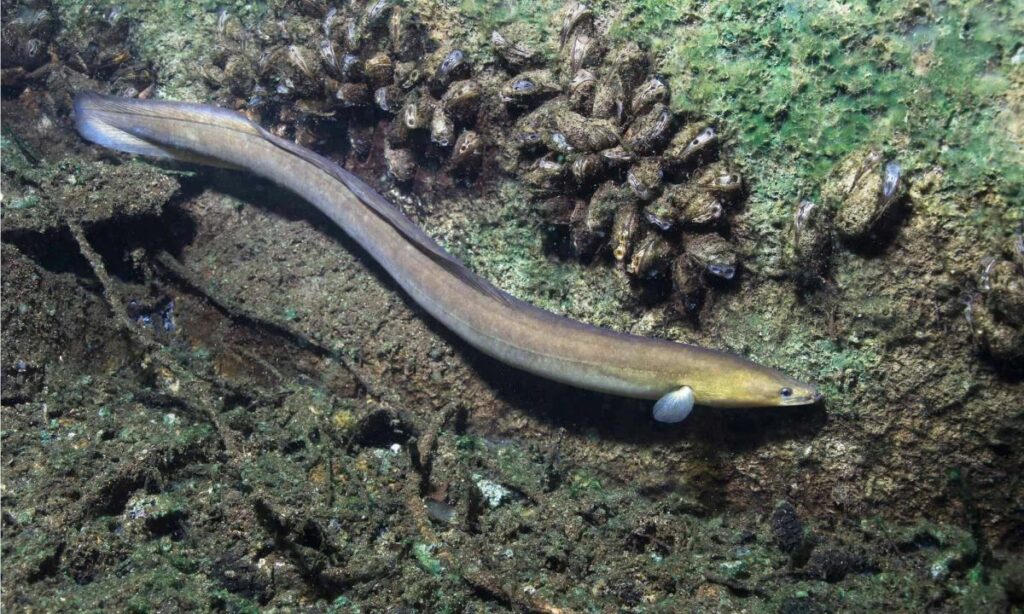
Freshwater eels are catadromous. This means they live most of their lives in freshwater but spawn in saltwater. When they are young, they stay close to estuaries and the mouths of rivers but move further into rivers as they age.
Includes:
- European eel
- Indian mottled eel
- New Zealand Longfin eel
2. Chlopsidae (false morays)
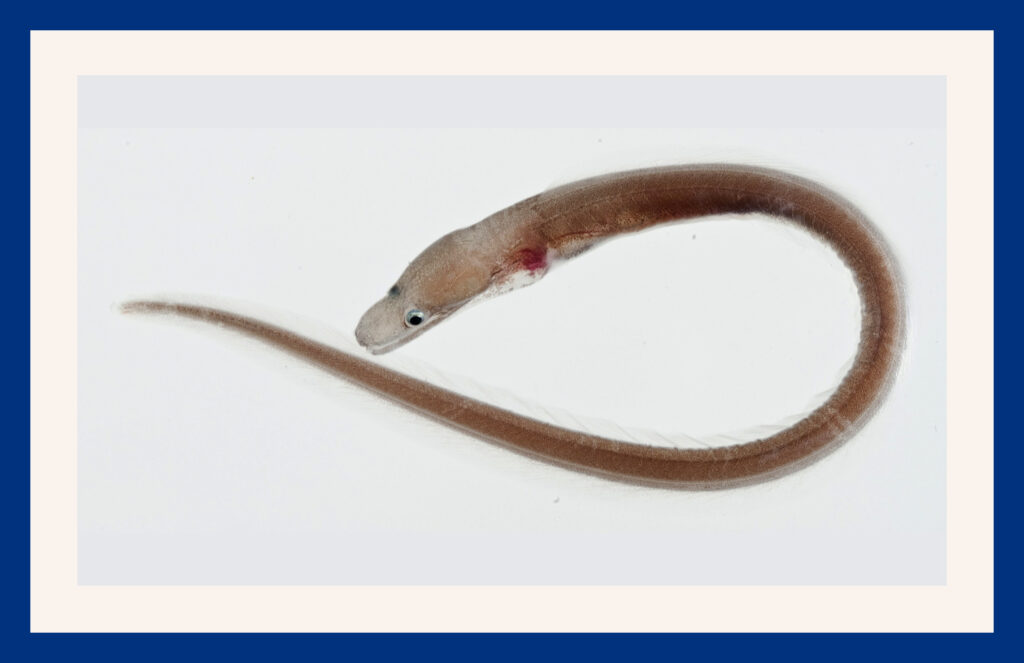
Small eels that enjoy burying in the sand and crevices of coral reefs. They only grow to about 7-8 in (17.8-20.3 cm) in length.
Includes:
- Seagrass eel
- Mottled false moray
- Plain false moray
3. Colocongridae (short-tail eels)
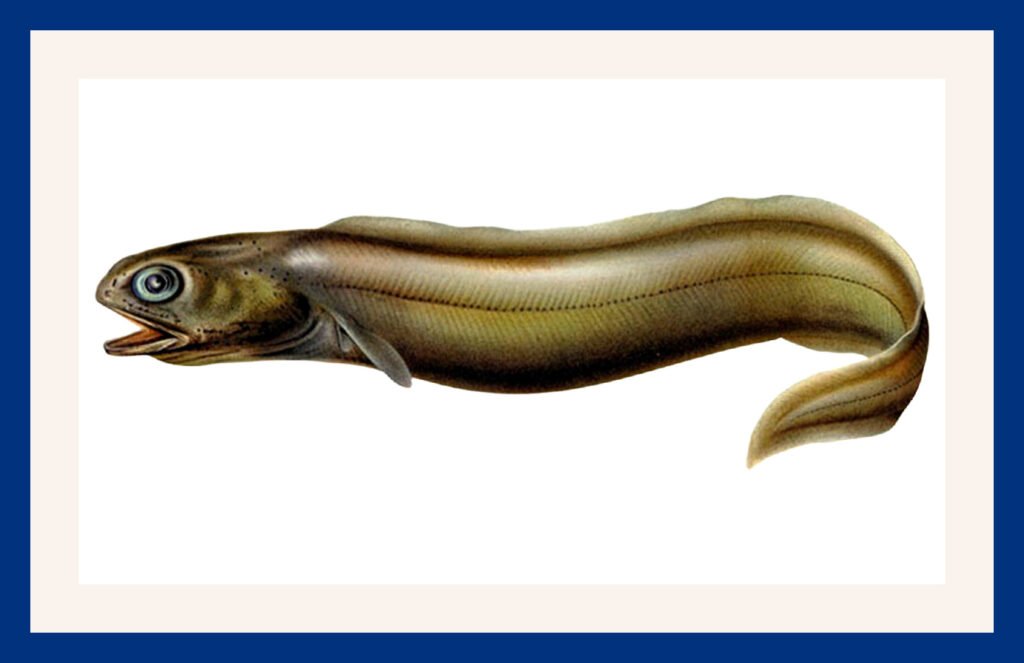
Deepwater eels that have short, stubby bodies and a blunt snout. They live in warm, but deep water between 1,000-2,900 ft (304.8-883.9 m) deep.
Includes:
- Giant leptocephalus
- Froghead eel
- Indo-Pacific short-tail conger
4. Congridae (conger eels)
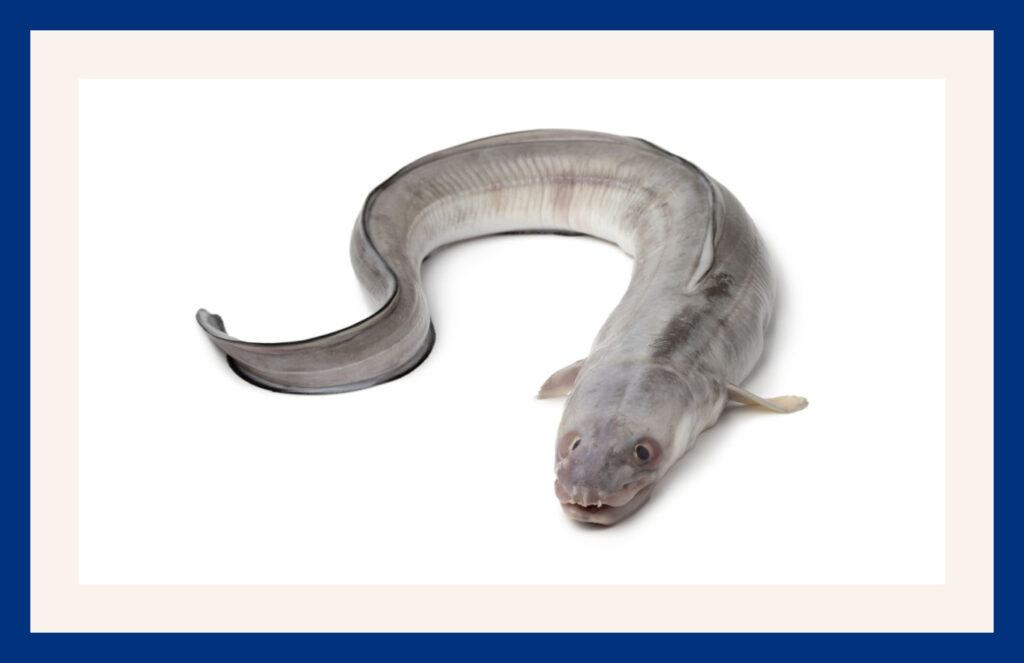
Deepwater eels with large heads and wide mouths. They don’t travel far to spawn and live at depths as far as 2,900 ft (883.9 m). There are 194 species of conger eels.
Includes:
- European conger
- American conger
- Longfin African conger
5. Derichthyidae (longneck eels)

Open-ocean-dwelling eels with specialized sensory receptors to help them navigate. The sensory receptors come in the form of stripes along their heads and bodies.
Includes:
- Narrownecked oceanic eel
- Dana duckbill eel
- Duckbill oceanic eel
6. Heterenchelyidae (mud eels)
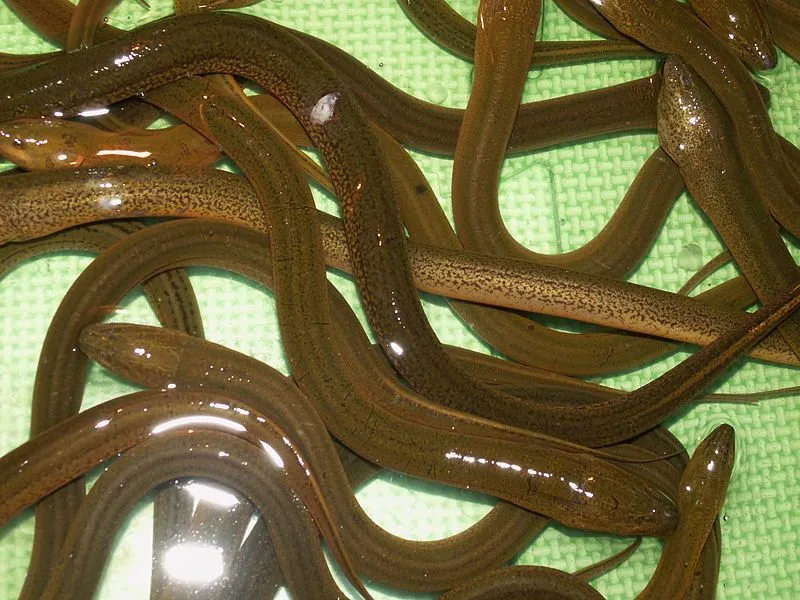
Burrowing eels that have no pectoral fins, no scales, and a large mouth. They prefer to burrow in the soft, muddy ocean floors.
Includes:
- Pacific mud eel
- Caribbean mud eel
- Slender short-faced eel
7. Moringuidae (spaghetti & worm eels)

Freshwater and saltwater eels that have long, thin bodies. The smallest of these eels is only 5 in (12.7 cm) while the longest is 55 in (139.7 cm).
Includes:
- Purple spaghetti eel
- Bengal spaghetti eel
- Smalleye spaghetti eel
8. Muraenesocidae (pike conger eels)
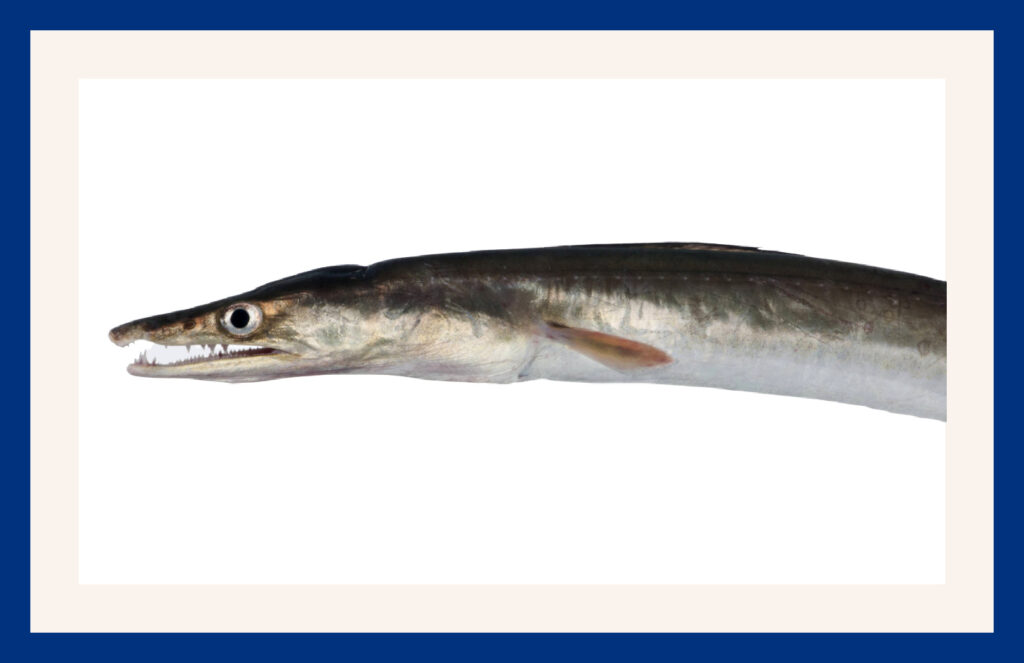
A pike conger is a larger eel that can move between freshwater and saltwater. Some are as small as 2ft (0.6 m) while others grow as large as 8 ft (2.43 m). The daggertooth pike-conger eel is a popular food in Japan, China, and Taiwan.
Includes:
- Daggertooth pike-conger eel
- Common pike-conger eel
- Red pike-conger eel
9. Muraenidae (moray eels)
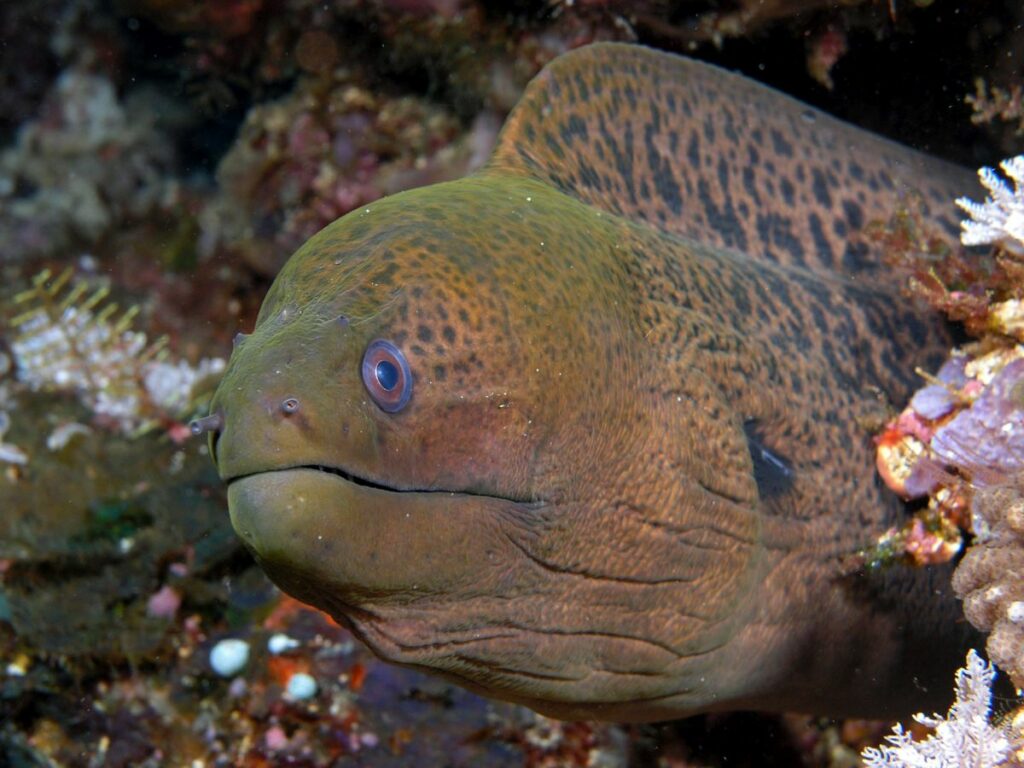
Shallow-water eels with brilliant colors and patterns. There are over 200 species ranging from 4.5 in (11.43 cm) to 13 ft (3.96 m).
Includes:
- Giant moray eel
- Zebra moray eel
- Black moray eel
10. Myrocongridae (red eels)
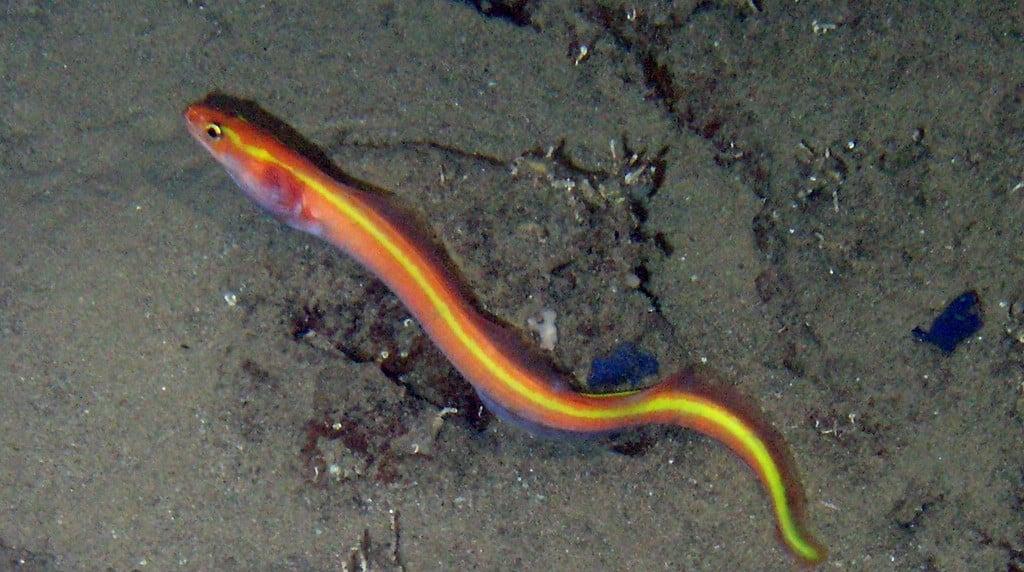
Only discovered in the 1990s, almost nothing is known about these other than that they exist.
Includes:
- Red eel
- Orange conger moray eel
- Myroconger gracilis
11. Nemichthyidae (snipe eels)
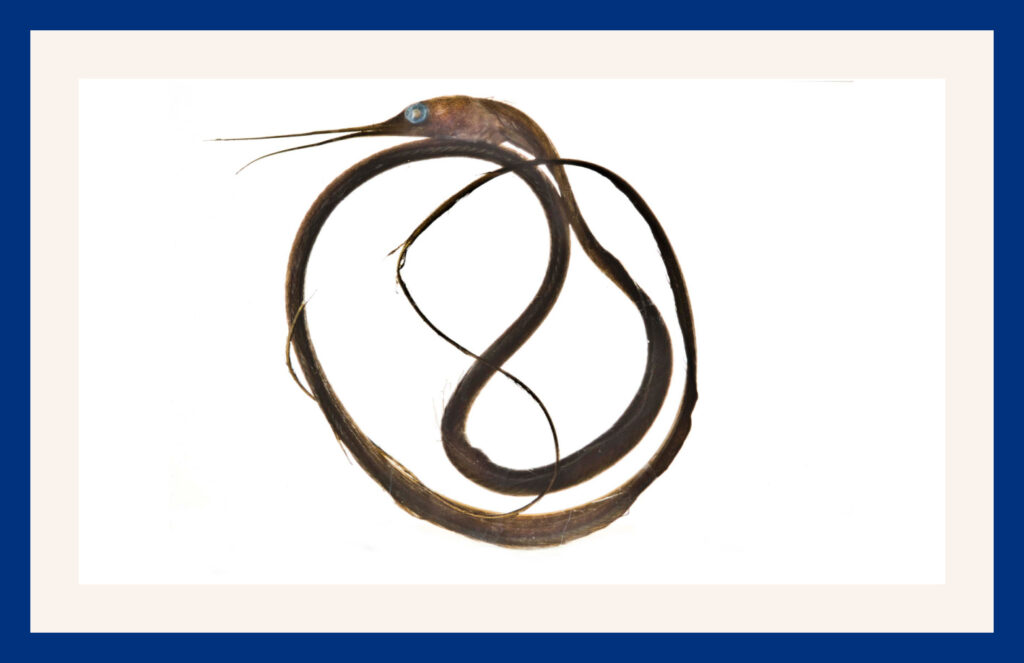
Open-ocean-dwelling eels with slender, tube-like bodies. Their thin jaws curve away from each other.
Includes:
- Southern snipe eel
- Slender snipe eel
- Boxer snipe eel
12. Nettastomatidae (duckbill eels)
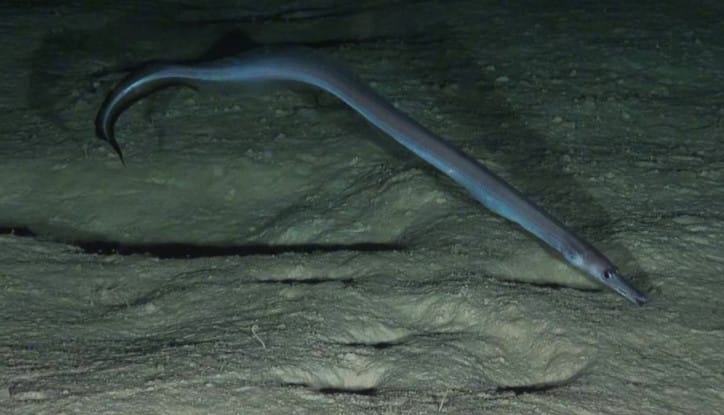
Eels with duckbill-shaped mouths used for preying on deepwater fish. They live along the continental shelves near the bottom of the ocean.
Includes:
- Blackfin sorcerer eel
- Whipsnout sorcerer
- Pygmy duckbill eel
13. Ophichthidae (snake eels)
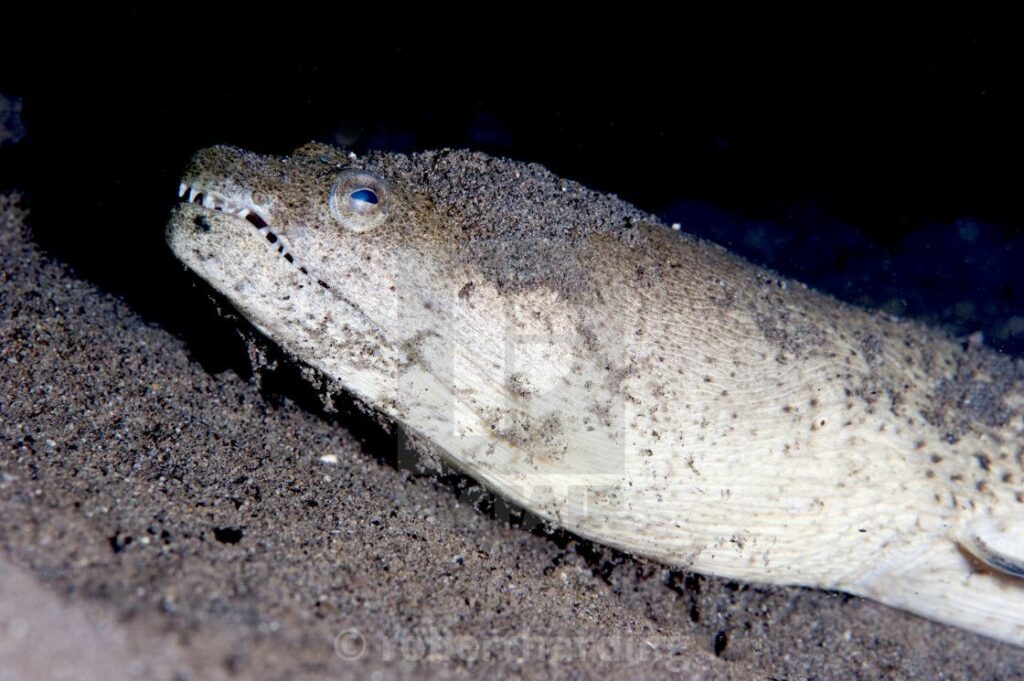
They lack fins to help them burrow through sand and mud. Their bodies have bright colors and patterns. They mimic venomous snakes to fend off predators.
Includes:
- King snake eel
- African spoon-nose eel
- Margined snake eel
14. Serrivomeridae (sawtooth eels)
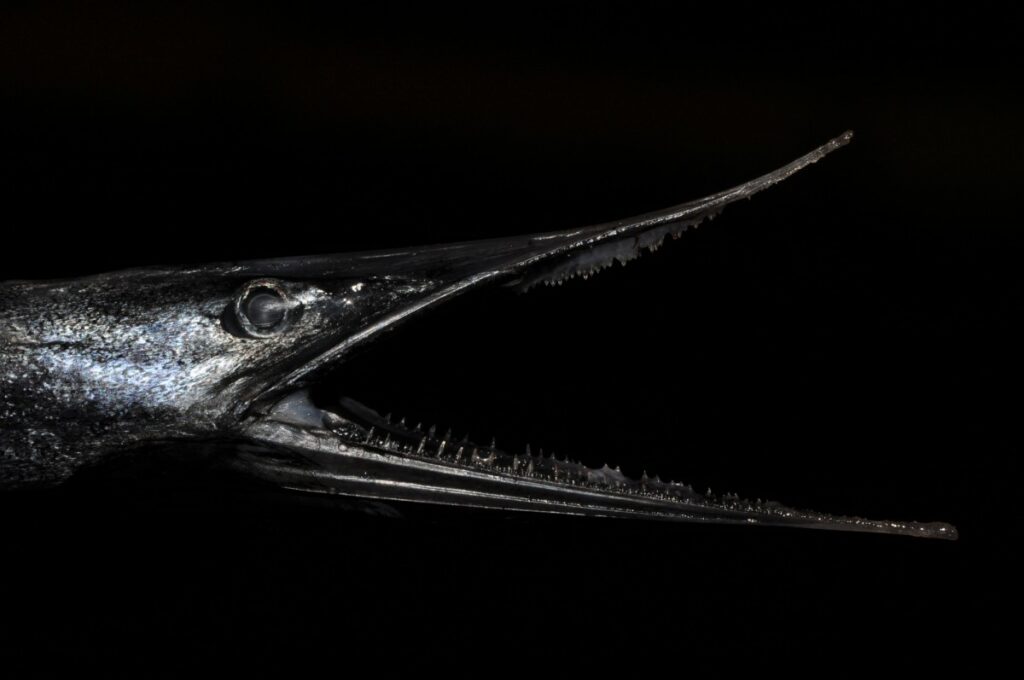
Deepwater, open-ocean-dwelling eels. They have teeth that face inwards like a saw.
Includes:
- Samoan sawtooth eel
- Black sawtooth eel
- Crossthroat sawpalate
15. Synaphobranchidae (cutthroat eels)

Deepwater eels that live as deep as 12,000 ft (3,657.6 m) in the ocean. Their gills sit just underneath the throat of the animal, making it appear to have a slit throat.
Includes:
- Shortdorsal cutthroat eel
- Snub-nosed eel
16. Protanguilla (first eels)
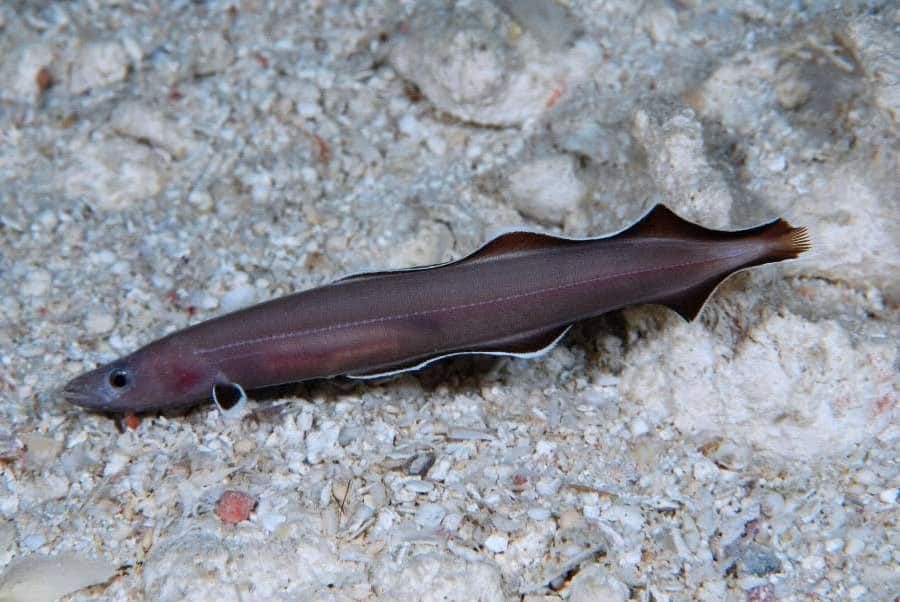
Small, primitive-looking eels discovered in a deepwater cave in 2010. They have features, like bony gill rakers, that set them further back on the evolutionary chain. They’ve earned the name “living fossil”.
17. Eurypharyngidae (pelican eels)

Deepwater eels that have a mouth consisting of a large pouch. These eels are often referred to as ‘gulper’ eels. They can stretch the pouches to accommodate prey much larger than themselves. They also have a whip-like tail tipped with an organ that emits light to attract prey.
18. Saccopharynx (deepsea large-necked eels)

Another type of gulper eel, these deepsea eels have a large throat pouch rather than a mouth pouch. They live in the eastern Atlantic Ocean at depths of up to 9,842.5 ft (3,000 m).
19. Monognathidae (one jaw gulpers)

These are gluper eels that have regularly-sized mouths. They have no pectoral fins, and the dorsal and anal fins have no bony supports. Most species live below 6,561.7 ft (2,000 m)
Conclusion
Over 800 species of eels call our world home. Some eels live in freshwater, some in saltwater, and others can freely swim between both.
The world’s largest eel species is European conger eel. The Snyder’s moray eel is the world’s smallest eel. There is endless variety in the eel species, and there is much that we can still learn about them.
FAQs
The most common eel predators include larger eels, large fish, and fish-eating birds. In many countries, humans are also predators of freshwater eels.
Moray eels are the most dangerous types of eels. Still, they are fearful and won’t usually attack unless provoked. If they do attack, you can expect serious wounds. They have long, sharp teeth to grip and shred into their prey.
Yes, true eels have fins. But, they have a long, continuous dorsal fin that connects to their anal and caudal fins.
